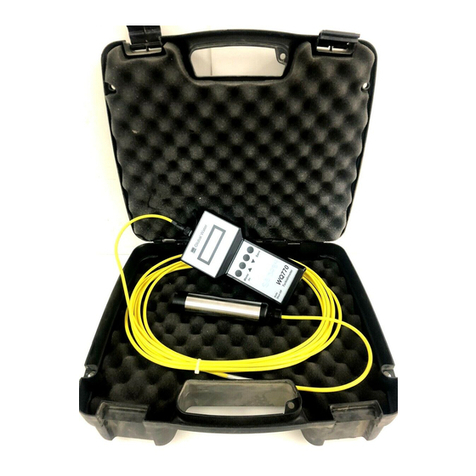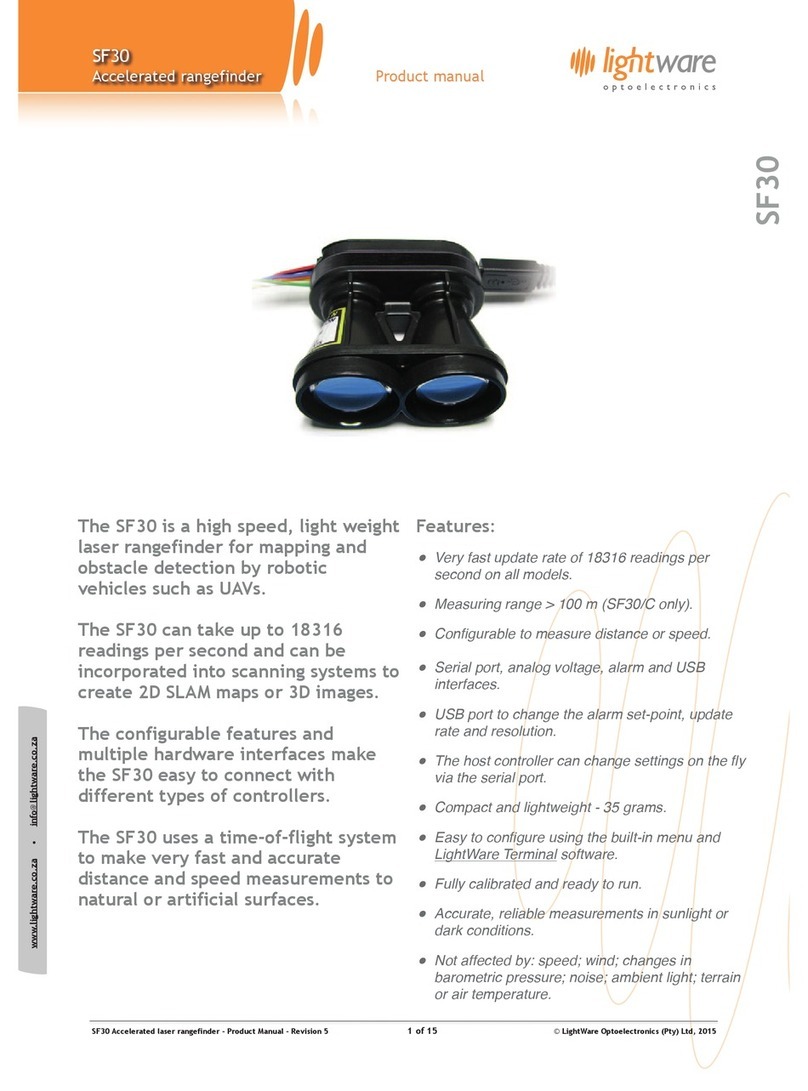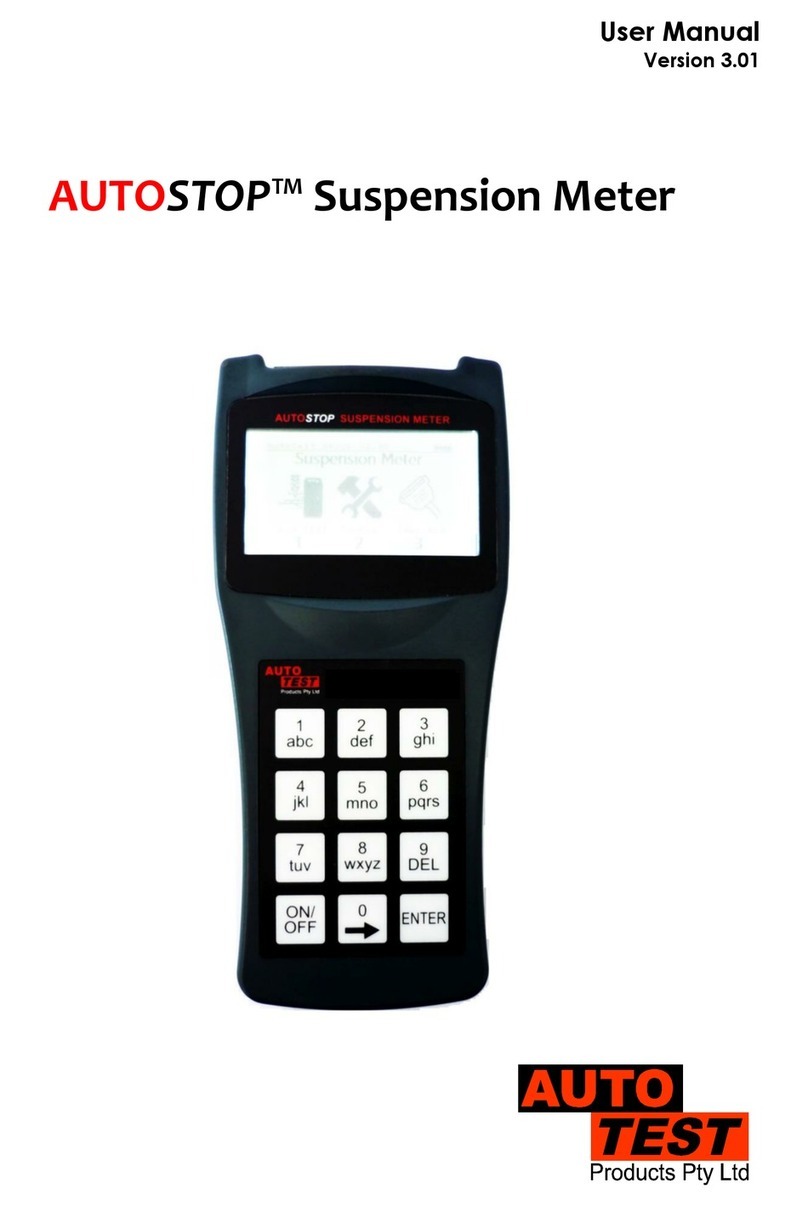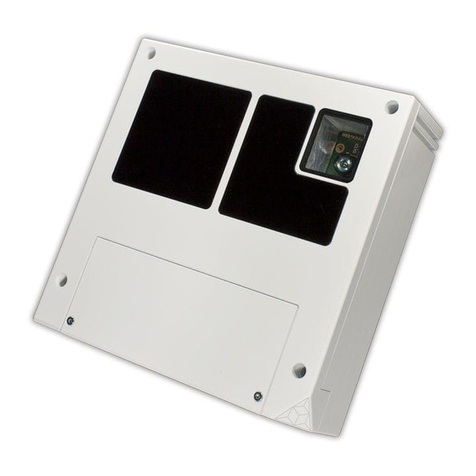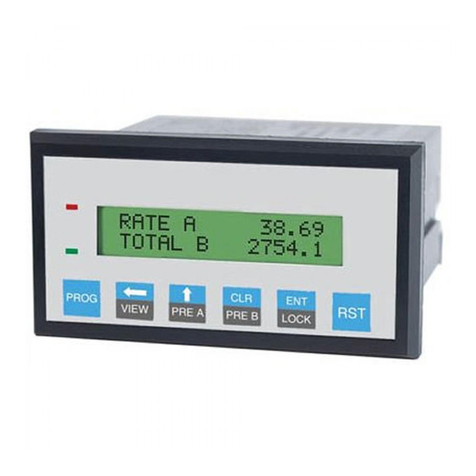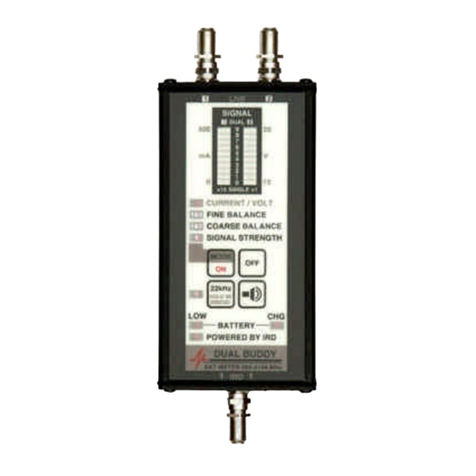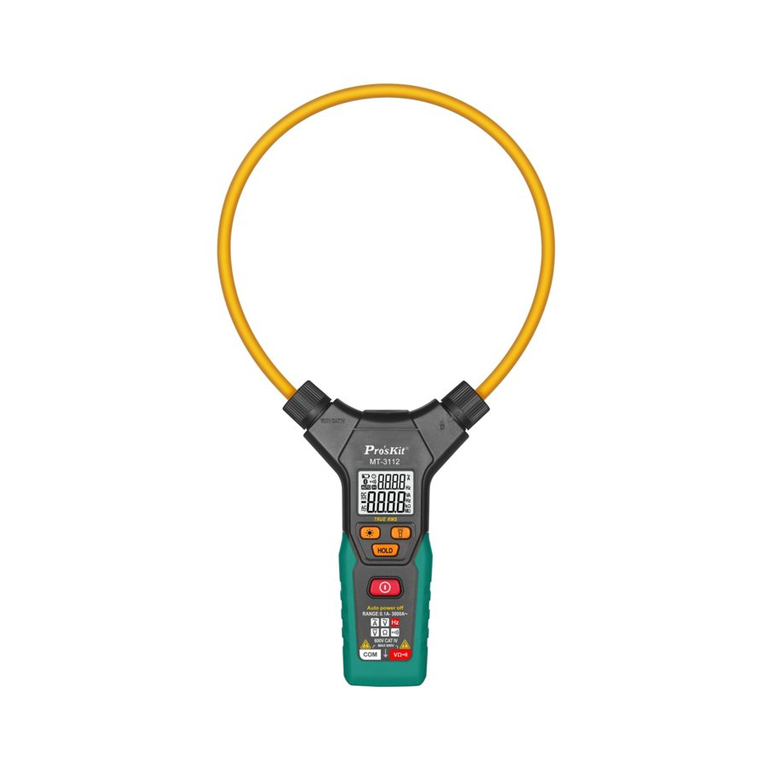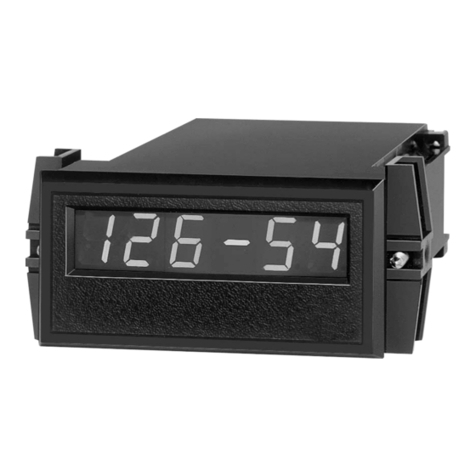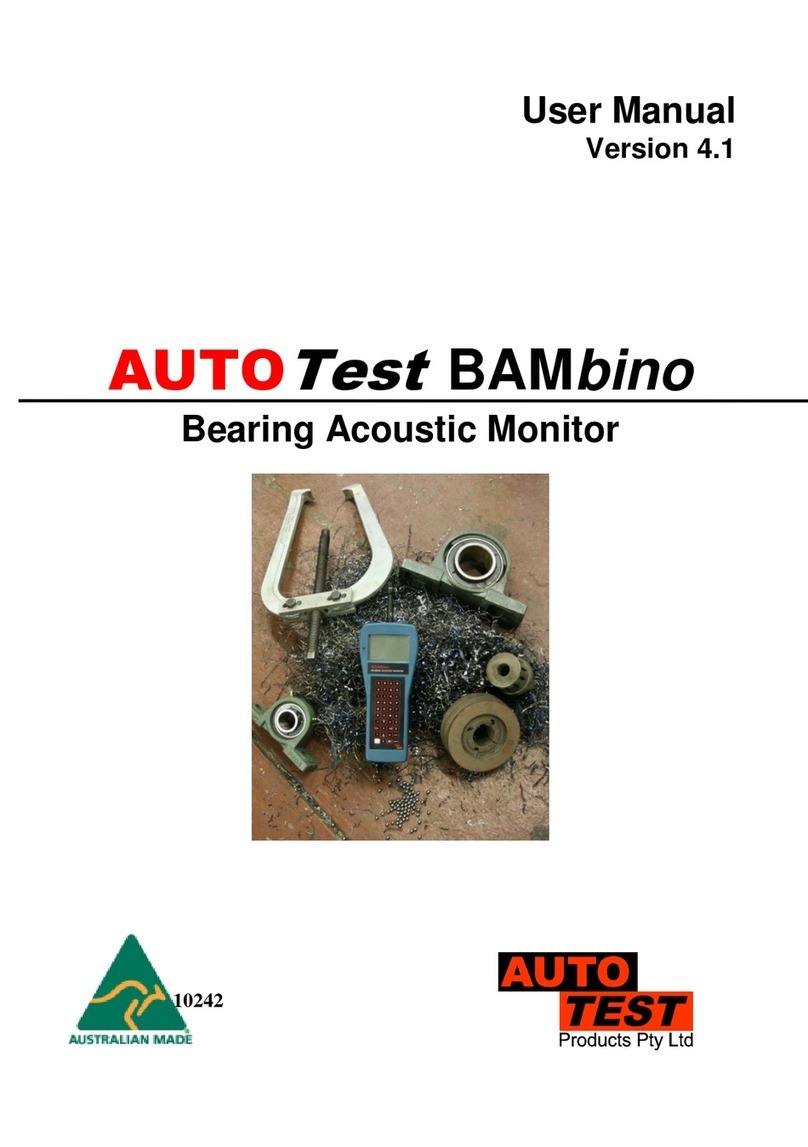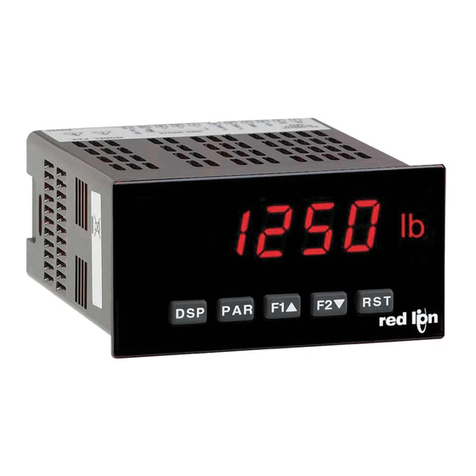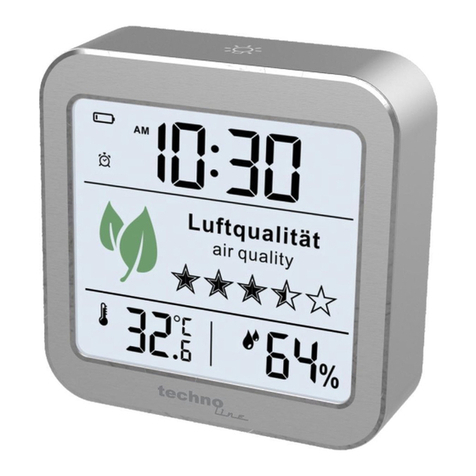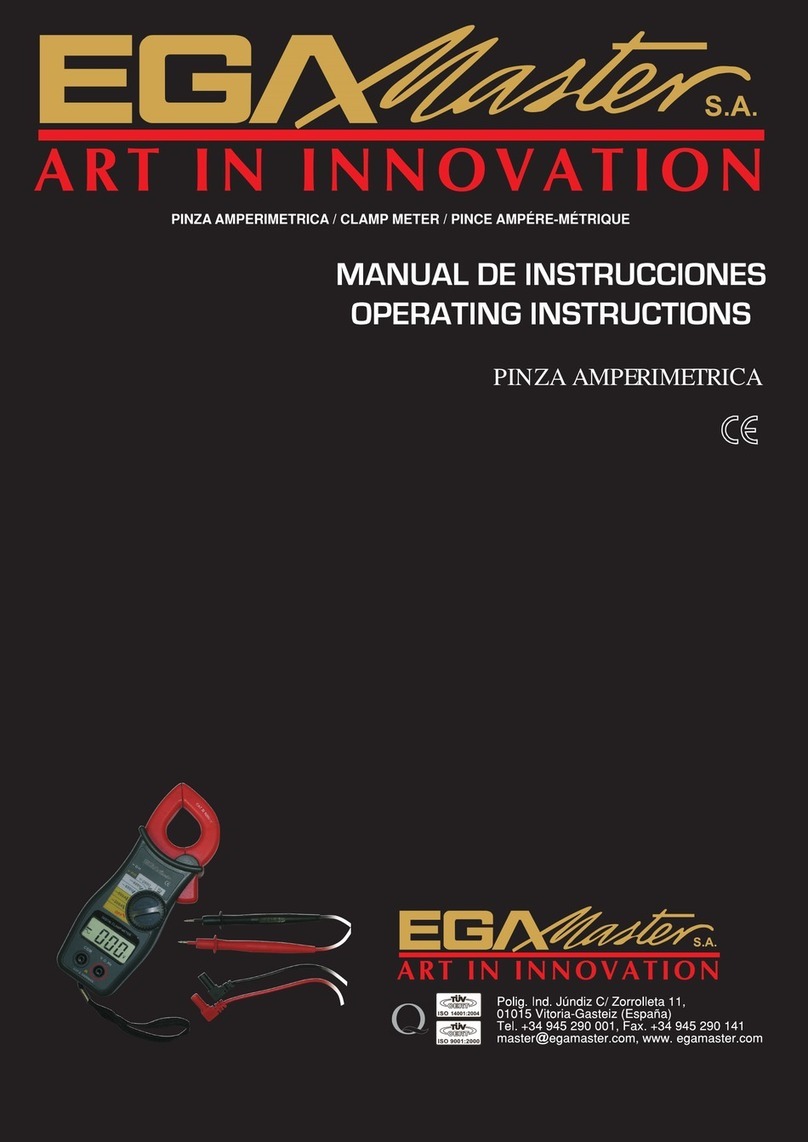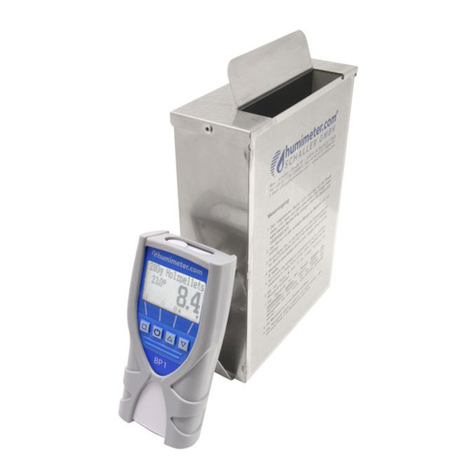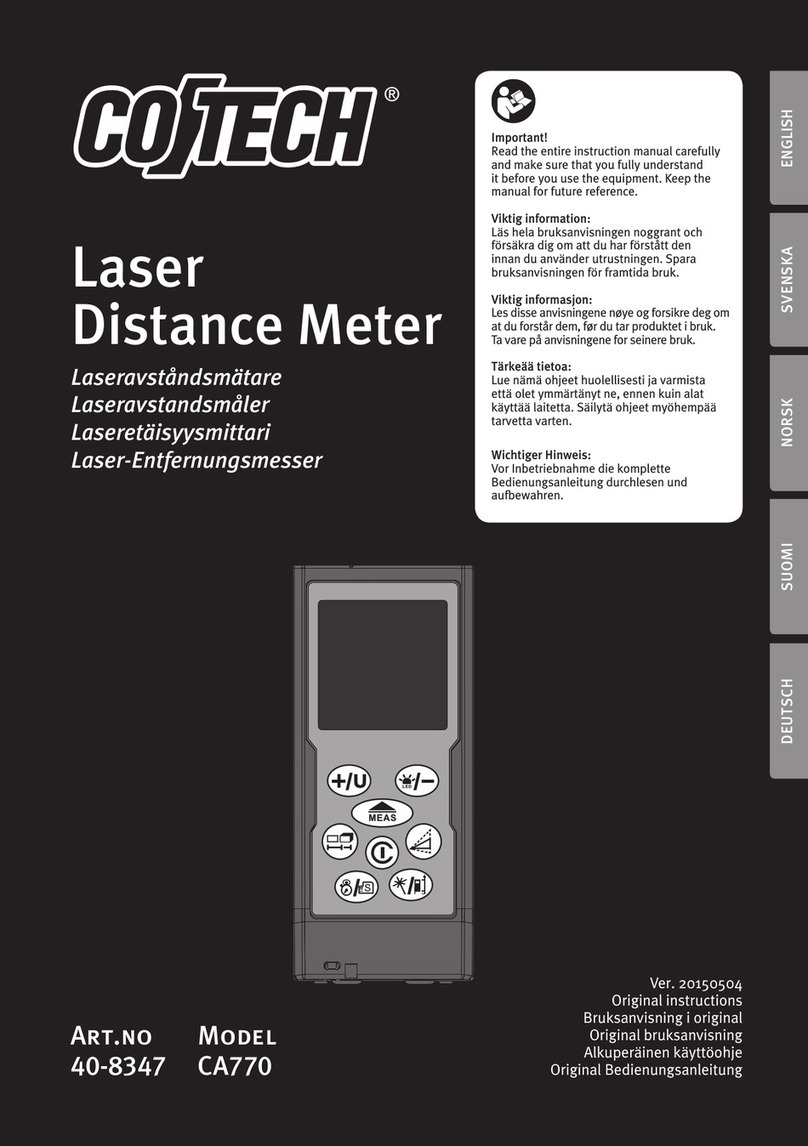ATSI LF-22 User manual

WARNING: The procedure for finding existing loops with the LF-22 describes w lking round in the street
while looking t the tester. THE USER MUST TAKE ADEQUATE PRECAUTIONS TO PREVENT INJURY
FROM MOTORISTS (LIKE ESTABLISHING A WORKZONE, AND DIVERTING TRAFFIC). Do not t ke
ch nces with the “Superm n” method, which is thinking you re clever enough nd quick enough to st y out
of the w y of tr ffic while intently w tching the Loop Finder for sign l strength re dings! Be sm rt. Avoid
injury. Do the right thing. Est blish Work Zone nd then do your work.
Th nk you for purch sing the ATSI LF-22 Loop Finder. We hope this h ndy tool will help you m int in your
gency’s vehicle detection loop inst ll tions.
The LF-22 is designed to sense electrom gnetic fields (EMF) nd give field
flux strength indic tion by lighting up curved string of LED’s on the f ce of the
unit. The intended purpose is to llow tr ffic sign l technici ns to find the
electrom gnetic field th t is emitted by inductive loop wires th t re being
excited by working vehicle loop detector. With little pr ctice, the LF-22
oper tor c n loc te the pproxim te position of the loop wires th t re inst lled
bene th the ro d surf ce.
The LF-22 gives visu l indic tion of the strength of the EMF th t llows the
technici n to identify nd di gnose loop detection inst ll tions th t f il to detect
high-bed truck tr ilers (for vehicle counting nd cl ssifying) or sm ll vehicles
with low electrom gnetic “footprints” (motorcycles nd bicycles). The service
technici n c n lso use the LF-22 to loc te nd m rk loops th t h ve been covered up by re-surf cing work.
This is helpful when ne rby ro d rep irs or utility work could destroy the loop if the equipment oper tors re
not w re of the loc tion of the loop wires.
Twisted le d-in wires running between the junction box nd the ctu l
loop emit much we ker sign l, nd re much h rder to detect.
Le d-in wires in the ro d surf ce re gener lly 5 inches or less below
the surf ce, nd c n usu lly be detected by the LF-22. Twisted
“Home Run” wiring, which connects the loop wires in the junction box
to the sign l c binet, re typic lly 12 to 24 inches below the surf ce,
sometimes run within shield or met llic conduit, nd usu lly c nnot
be detected by the LF-22.
To use the LF-22, slide the left-most slide switch to the “ON” position,
nd observe the sign l strength nd power on LEDs on the front of the
unit. All the LEDs should light up briefly, nd the power on LED
should rem in lit. The ntenn in the LF-22 is most sensitive to EMF
lines of flux th t p ss through the unit perpendicul r to the front p nel,
so the instructions given here work when the unit is held horizont lly,
or “fl t” with respect to the ground, s show here. St rt with the two
sensitivity switches in the up position to m ximize the sensitivity, nd
hold the unit “fl t” to the ground t w ist level nd w lk over the re
you w nt to survey, while w tching the LEDs on the f ce of the LF-22.
You will begin to detect loop wires of the working loops.
LF-22 Loop Finder - Operating Guide
Version 2 – 5/15/15

The lines of flux form circul r p ttern round properly inst lled loop wire, s shown in Figure 3 below.
When the ntenn of the Loop Finder p sses through the lines of flux in “fl t” orient tion, the unit will give
the oper tor “high-low-high” sign l strength p ttern with the sign l meter LEDs th t is centered over the
position of the wire (see Figure 3).
When you need to pinpoint the loop wires, reduce the sensitivity by djusting the sensitivity switches on the
f ce of the unit, ccording to the instructions on the LF-22. This llows you to hold the unit closer to the loop
wires without h ving the loop strength re ding t the m ximum ll the time. Continue to look for the High-
Low-High p ttern to loc te the position of the wire, nd then m rk the p vement if desired.
Since you will w nt to hold the LF-22 fl t nd ne r the p vement,
we h ve included br cket which will hold the unit nd ccept
piece of ¾ inch CPVC pipe or conduit (provided by the user)
which forms the h ndle. This will llow you to st nd upright while
using the LF-22. The one-h nded oper tion llows you to hold
spr y c n of m rking p int in the other h nd for loop m rking.
The unit requires st nd rd 9 Volt b ttery for oper tion. The LF-
22 is shipped with b ttery inst lled in the b ttery comp rtment,
which is on the b ckside of the unit. To repl ce the b ttery,
remove the two screws holding the b ttery comp rtment cover in
pl ce nd remove the b ttery from the b ttery le d. Inst ll the
new b ttery in simil r f shion, m king sure there is good connection with the b ttery le d. Do not over-
tighten the b ttery comp rtment screws. Remove the b ttery for long-term stor ge of the unit.
We hope the LF-22 helps you with your sign l m inten nce ctivities. We re lw ys interested in feedb ck
from users like you, good or b d, bout the products we offer. Feel free to em il or c ll ATSI with your
opinions bout nd ny interesting uses for the LF-22 Loop Finder. Th nks for buying our product!
If you h ve ny questions, ple se cont ct us t service@ tsi-tester.com or c ll us t (740) 592-2874.
NOTE: If the readings are erratic or the loop strength LEDs stay on, replace the batteries.
Table of contents
